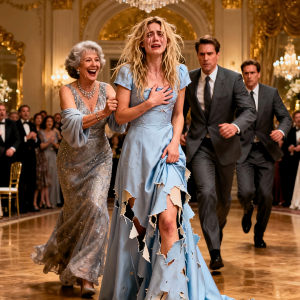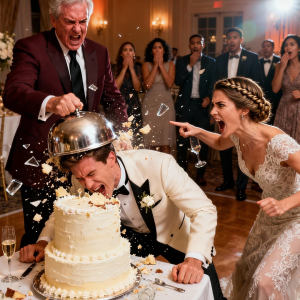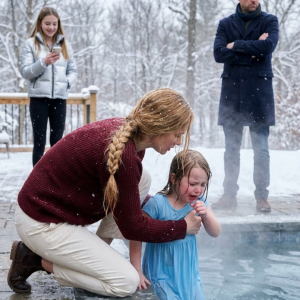
I was sipping iced tea on our back deck in Charleston when my wife, Nora, came outside waving a cream-colored envelope.
“It’s from Matt and Sophie!” she said, sliding her finger under the seal. “Their wedding invite finally arrived.”
Nora skimmed the card, then flipped it over and raised an eyebrow. “Um… okay, this can’t be right.”
She passed the RSVP insert to me. At the bottom, in large cursive handwriting far more dramatic than Matt’s usual print, was a bizarre note:
“LADIES — PLEASE WEAR WHITE. EVEN WEDDING DRESSES WELCOME!”

“What in the world?” I asked. “Is this a joke? Or a cult?”
“I have no idea,” Nora said, laughing nervously. “Everyone knows wearing white to someone else’s wedding is like… social suicide.”
Matt and I go way back—we served together in the Navy and have stayed tight. He’s levelheaded, not the kind to cook up a stunt like this. And Sophie? I’d only met her twice, but she struck me as elegant and unshakeable. This just didn’t make sense.
I pulled out my phone and gave Matt a call.
“Hey, man,” I said as soon as he picked up. “We just got the invite. What’s with the dress code? Is this some kind of fashion experiment?”
Matt sighed hard enough for me to hear it. “No, it’s not us. It’s Carol.”
“Carol… your future mother-in-law?”
“Yep. Sophie’s mom. She’s planning to wear her old wedding gown to the ceremony. She already tried to derail Sophie’s bridal shower by showing up in a sequined white number and loudly critiquing the appetizers.”

“So… what’s the plan? How does inviting everyone to wear white help?”
“That was Sophie’s idea,” Matt said. “She figured if her mom wants to steal the spotlight, we’ll just hand out spotlights. Let every woman wear white—gowns, veils, the works. If everyone’s dressed like a bride, her mother’s theatrics won’t matter.”
Word spread like wildfire. Within days, a dozen women on the guest list were dusting off their wedding gowns or raiding vintage shops. Text threads exploded with photos of dress fittings, lace gloves, and dramatic headpieces.
We arrived early, and the chapel was buzzing. Everywhere I looked, there were women dressed in white: silk, tulle, organza. Someone had on a 1980s poofy-sleeved number, and I even spotted a full cathedral veil.
At 2:45 p.m., a black luxury sedan pulled up. Matt nudged me.
Carol emerged in a dramatic white gown, rhinestones glittering like a disco ball. Her train dragged halfway to the sidewalk, and her tiara gleamed under the afternoon sun.

Her husband, Harold, stepped out behind her, looking vaguely terrified.
Matt opened the doors wide and greeted them with exaggerated politeness. “Welcome, Carol. You look… luminous.”
She glided in with regal arrogance—only to freeze. The chapel was a vision in white. Two dozen women turned in unison, adorned in bridal attire.
“What… what is this? I’m her mother! This is completely inappropriate!” she demanded, voice cracking.
Just then, the music changed.
Everyone turned toward the door at the opposite end of the chapel. Sophie appeared, walking down the aisle in a breathtaking gown of ruby red and gold, arm-in-arm with her father. She looked regal, radiant, and powerful—like a queen in a sea of white.

The crowd gasped, then applauded.
Carol? She sat stiffly through the entire ceremony, her rhinestones looking dull in comparison.
She didn’t speak a word. Didn’t smile. Didn’t stay for cake.
After the vows, she gathered her gown and exited like a defeated general. Harold gave Sophie a quick hug before jogging after her.
The rest of us? We danced into the night.

Later, I caught Sophie at the bar. “That was a bold move,” I said.
She smiled. “Sometimes, you have to outdrama the drama.”
Nora raised her glass. “To the bride who wore red… and won.”
And we toasted—not just to love, but to cleverness, courage, and the quiet thrill of reclaiming your own moment.




